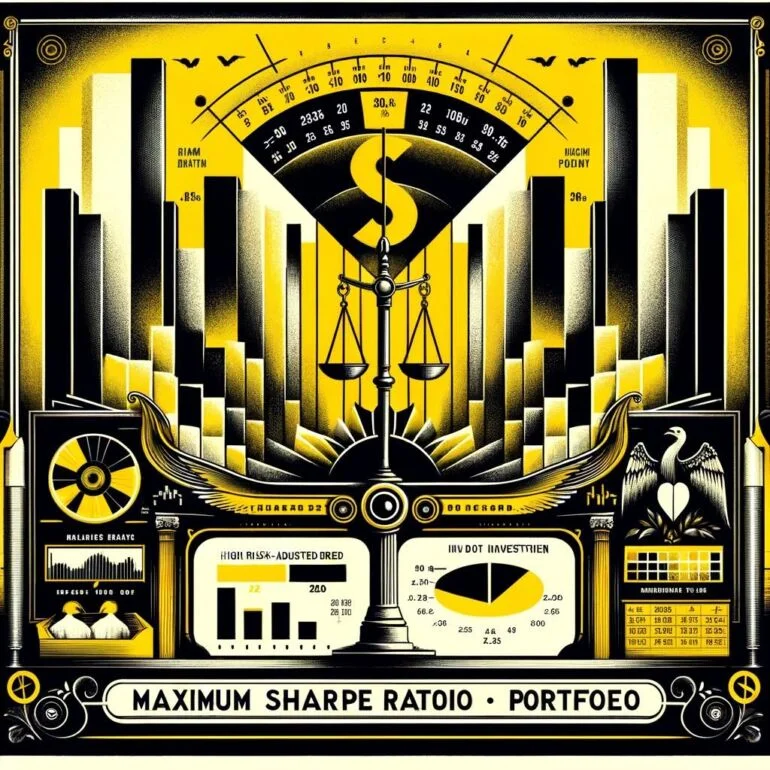Investors are always seeking ways to maximize their returns while minimizing their risk. One approach to achieving this goal is to build a maximum Sharpe ratio portfolio. The Sharpe ratio is a widely used measure of risk-adjusted return, and a maximum Sharpe ratio portfolio is designed to optimize the asset allocation based on historical data and market conditions to maximize returns while minimizing risk.
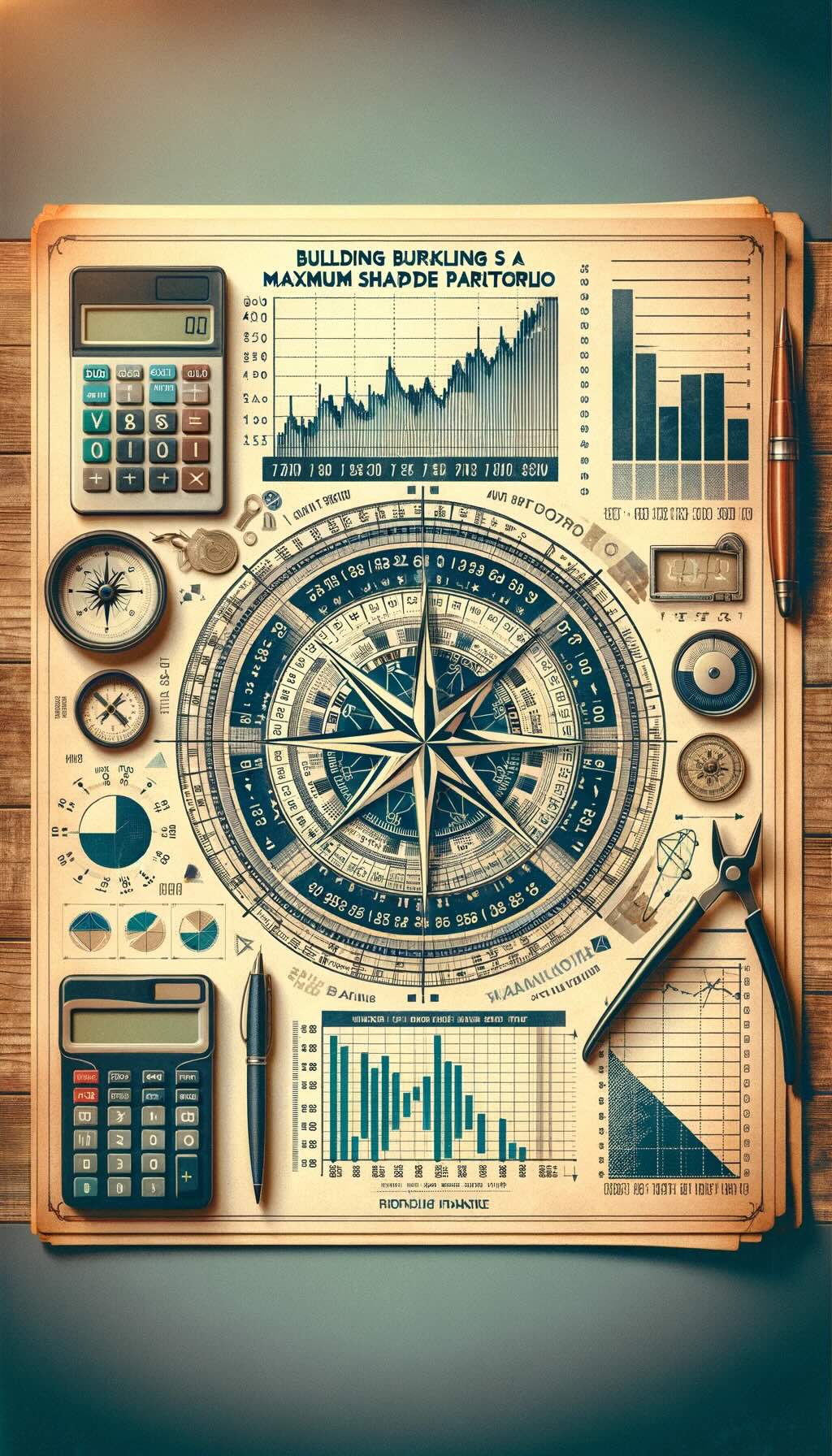
In this article, we will provide a step-by-step guide on how to build a maximum Sharpe ratio portfolio, including understanding the components of a maximum Sharpe ratio portfolio, selecting assets for the portfolio, portfolio construction, and monitoring.
Guide To Constructing A Max Sharpe Ratio Portfolio
The Sharpe Ratio is a widely used measure of risk-adjusted return that helps investors make better-informed investment decisions. The ratio was developed by Nobel Laureate William F. Sharpe in 1966 and is used to evaluate the performance of investment portfolios. The ratio helps investors understand how much risk they are taking to achieve a certain level of return, and it compares the returns of an investment to the amount of risk taken on.
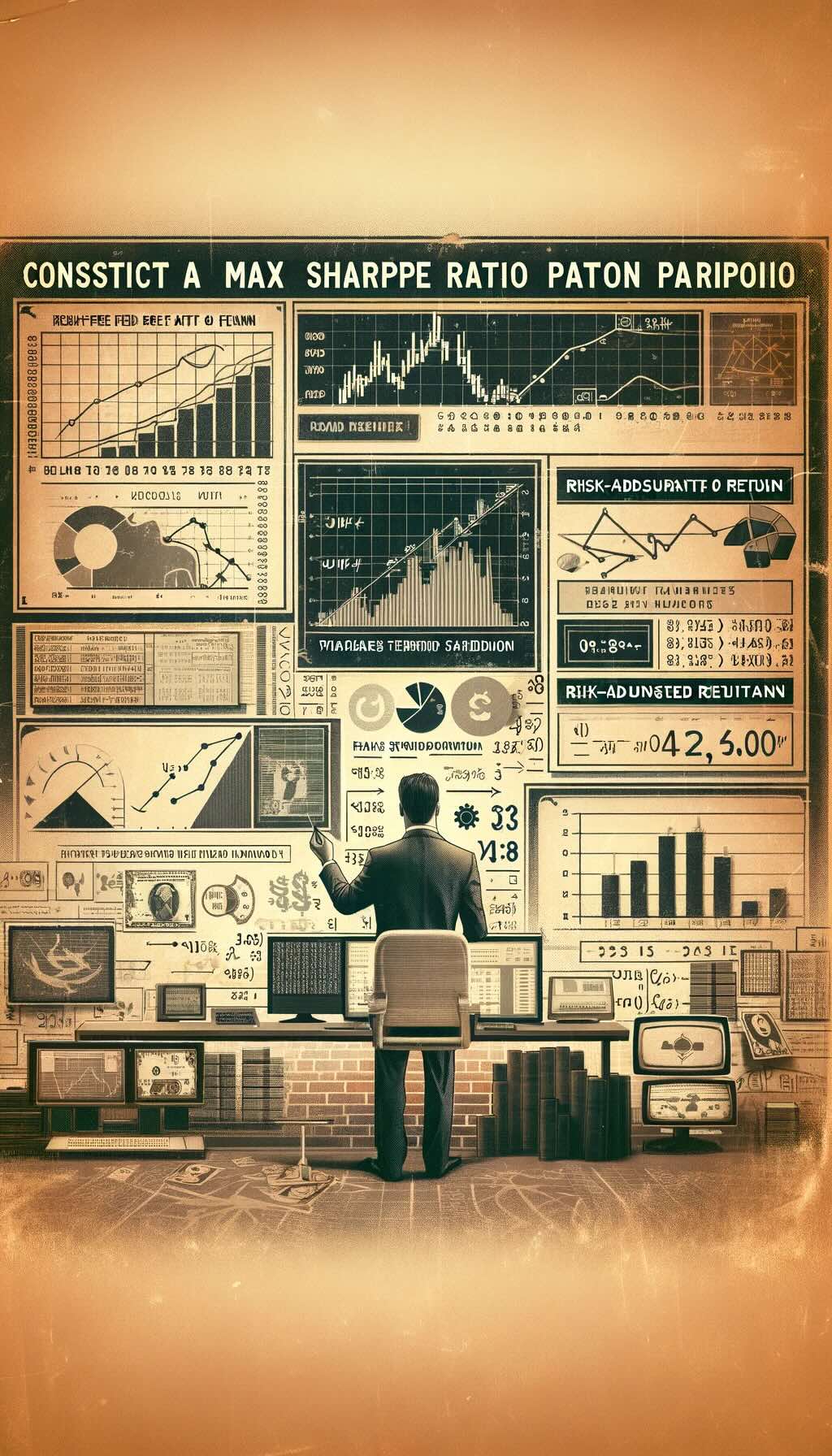
The Sharpe Ratio is calculated by subtracting the risk-free rate of return from the return of the investment portfolio and then dividing that number by the standard deviation of the portfolio’s returns. The risk-free rate of return is the return an investor would receive if they invested in a risk-free asset such as U.S. Treasury bills. The standard deviation of the portfolio’s returns measures the variability of the portfolio’s returns, or how much the returns deviate from their average.
source: Ryan O’Connell, CFA, FRM on YouTube

Sharpe Ratio Formula
The formula for the Sharpe Ratio is:
Sharpe Ratio = (Rp – Rf) / σp
Where: Rp = Portfolio return Rf = Risk-free rate of return σp = Standard deviation of portfolio returns
For example, if the return on a portfolio is 10%, the risk-free rate of return is 2%, and the standard deviation of the portfolio’s returns is 5%, the Sharpe Ratio would be:
Sharpe Ratio = (10% – 2%) / 5% = 1.6

The interpretation of the Sharpe Ratio is straightforward: the higher the Sharpe Ratio, the better the risk-adjusted return. A Sharpe Ratio of 1 or greater indicates that the investment is generating returns that are above what could be achieved by investing in a risk-free asset. A Sharpe Ratio of less than 1 indicates that the investment is not generating sufficient returns to justify the level of risk taken.
Sharpe Ratio Example
Here’s an example of how the Sharpe Ratio can be used to compare two investments:
Investment A has an average annual return of 12% with a standard deviation of 10%, while Investment B has an average annual return of 9% with a standard deviation of 5%. The risk-free rate of return is 2%.
To calculate the Sharpe Ratio for Investment A:
Sharpe Ratio = (12% – 2%) / 10% = 1
To calculate the Sharpe Ratio for Investment B:
Sharpe Ratio = (9% – 2%) / 5% = 1.4
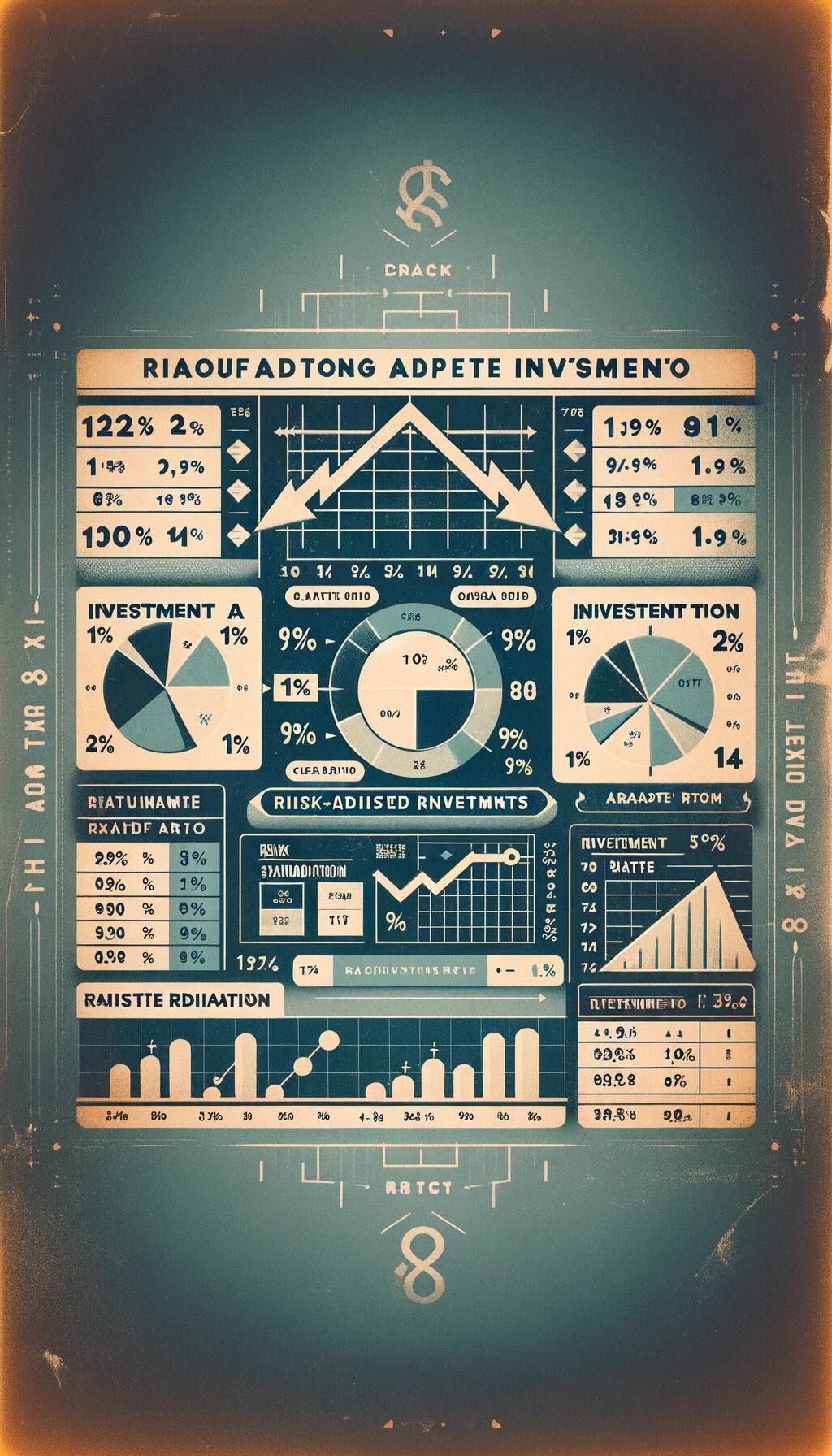
In this case, Investment B has a higher Sharpe Ratio than Investment A, indicating that Investment B has a better risk-adjusted return.
While the Sharpe Ratio is a useful measure of risk-adjusted return, it has some limitations. One limitation is that it assumes that the distribution of returns is normal, which may not be true for all investments. Additionally, the Sharpe Ratio does not take into account the possibility of extreme events or tail risk, which can have a significant impact on investment returns.
The Sharpe Ratio is an important measure of risk-adjusted return that helps investors evaluate the performance of their investment portfolios. It is a simple and effective way to assess the returns generated by an investment relative to the risk taken. However, investors should be aware of the limitations of the Sharpe Ratio and use it in conjunction with other measures to make well-informed investment decisions.
Sharpe Ratio Masterpiece: Maximum Returns While Minimizing Risk
Investors are always looking for ways to maximize returns while minimizing risk, and one important metric for evaluating the performance of an investment portfolio is the Sharpe ratio. The Sharpe ratio is a measure of risk-adjusted returns, taking into account both the level of returns and the level of risk in a portfolio.

To build a higher Sharpe ratio portfolio compared to a traditional 60/40 portfolio, investors should consider incorporating specific strategies that can help increase returns while minimizing risk.
One strategy is to incorporate alternative investments, such as real estate, commodities, and private equity. Traditional 60/40 portfolios typically consist of stocks and bonds, but adding alternative investments can provide diversification and potentially higher returns. For example, real estate can provide a hedge against inflation and a stable source of income, while commodities can provide diversification and protection against inflation.
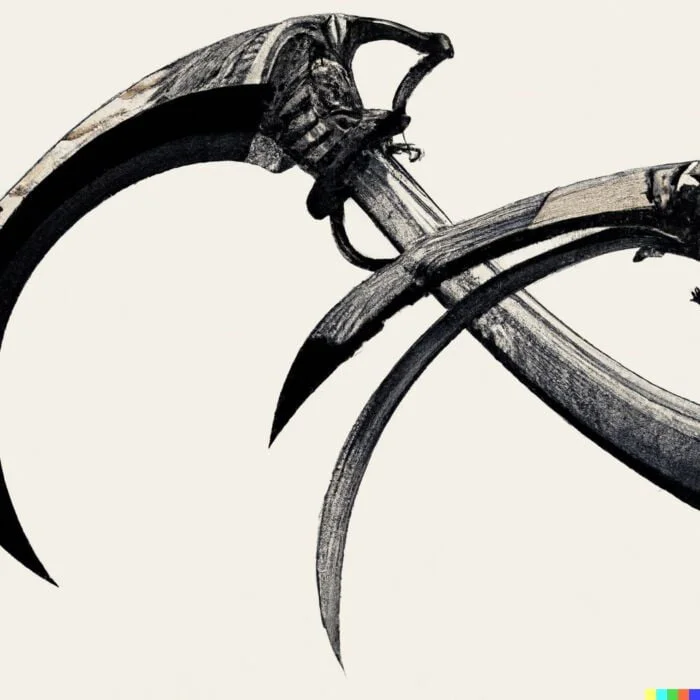
Another strategy is to diversify across asset classes. Diversification is key to reducing risk in a portfolio. By diversifying across different asset classes such as equities, fixed income, real estate, and commodities, investors can reduce overall portfolio risk while potentially increasing returns. For example, during periods of market volatility, fixed income investments may provide a more stable source of returns than equities.
Using risk management strategies is also important when building a higher Sharpe ratio portfolio. Investing always involves some level of risk, but there are strategies that can help manage that risk. One such strategy is using stop-loss orders to limit losses in the event of a market downturn. Another strategy is using options to hedge against market volatility. For example, buying put options can provide protection against a decline in the value of a stock.
Potential Power Of Quantitative Investing Methods
Utilizing quantitative investment methods is another way to potentially increase returns while reducing risk. Quantitative investment methods involve using computer models and algorithms to analyze large amounts of data and identify investment opportunities. These methods can help identify inefficiencies in the market and potentially increase returns while reducing risk. For example, a quantitative investment model might use historical data to identify stocks that are undervalued relative to their peers.
When implementing these strategies, it’s important to carefully consider their risks and drawbacks. Alternative investments may have a higher level of risk than traditional investments, while diversification can also lead to lower returns. Risk management strategies may also limit upside potential, while quantitative investment methods may be subject to errors in the underlying data or algorithms.
Examples of higher Sharpe ratio portfolios include a mix of domestic and international equities, fixed income, real estate, and commodities, as well as portfolios that incorporate alternative investments such as private equity, hedge funds, and venture capital. Portfolios that use risk management strategies such as stop-loss orders and options to hedge against market volatility, and portfolios that utilize quantitative investment methods to identify investment opportunities, can also potentially achieve higher Sharpe ratios.
In conclusion, building a higher Sharpe ratio portfolio requires a combination of sound investment strategies, careful risk management, and a focus on long-term goals. It’s important to work with a qualified financial advisor who can help design a customized investment strategy that meets your individual needs and goals. By incorporating these strategies into a portfolio, investors can potentially achieve higher returns while minimizing risk.
source: One Minute Economics on YouTube

Alternative Investments To Improve Sharpe Ratio
Alternative investment strategies are increasingly popular with investors as a way to improve portfolio diversification and potentially enhance the Sharpe ratio, which is a measure of a portfolio’s risk-adjusted return. The Sharpe ratio was developed by Nobel laureate William F. Sharpe and is widely used to assess investment performance.
The Sharpe ratio measures the excess return earned by a portfolio over the risk-free rate (such as U.S. Treasury bonds) per unit of volatility or risk. In other words, the ratio measures the risk-adjusted return of a portfolio. A higher Sharpe ratio indicates better risk-adjusted performance, while a lower Sharpe ratio indicates that the portfolio is taking on more risk for the same level of return.
Many investors traditionally use a 60/40 portfolio allocation, with 60% invested in equities and 40% invested in bonds, as a starting point for their portfolio. However, alternative investment strategies have shown the potential to improve a portfolio’s Sharpe ratio beyond the traditional 60/40 allocation.
One alternative investment strategy is managed futures. Managed futures are investments in futures contracts that are actively managed by professional fund managers. These investments can provide exposure to commodities, currencies, and other markets, which can help diversify a portfolio beyond traditional asset classes such as stocks and bonds.

Managed Futures and Long Short Equity Strategies
Managed futures can also provide downside protection during market downturns. According to the Barclay CTA Index, managed futures have generated positive returns during 14 of the past 20 years, demonstrating their potential to improve a portfolio’s Sharpe ratio.
Another strategy is long-short equity. Long-short equity strategies involve buying stocks that are expected to increase in value (long position) and selling stocks that are expected to decrease in value (short position). This strategy can help reduce overall market risk while still providing exposure to the equity market. Long-short equity strategies have the potential to improve a portfolio’s Sharpe ratio because they aim to generate returns regardless of the direction of the overall market.
Market neutral is another strategy that can improve a portfolio’s Sharpe ratio. Market neutral strategies aim to reduce overall market risk by taking equal long and short positions in similar stocks. This strategy is designed to generate returns based on the performance of individual stocks, rather than the overall market. Market neutral strategies have the potential to improve a portfolio’s Sharpe ratio because they aim to generate returns while minimizing overall market risk.
Merger Arbitrage Another Alternative
Finally, merger arbitrage is another strategy that can potentially improve a portfolio’s Sharpe ratio. Merger arbitrage involves buying stocks of companies that are involved in a merger or acquisition and selling short the stocks of companies that are being acquired. This strategy can provide returns that are not correlated with the overall market, and it has the potential to generate returns even if the stock market is stagnant. Merger arbitrage can improve a portfolio’s Sharpe ratio by providing diversification and potentially reducing overall market risk.
While alternative investment strategies can improve a portfolio’s Sharpe ratio, it’s important to note that these strategies are not without risks. Alternative investments often have higher fees and can be more complex than traditional investment strategies. Additionally, the performance of alternative investment strategies can be volatile and difficult to predict. Therefore, it’s important to thoroughly research and understand any alternative investment strategy before incorporating it into a portfolio. It’s also important to ensure that any alternative investments align with your overall investment goals and risk tolerance.
source: Investopedia on YouTube

Maximum Sharpe Ratio Portfolio Final Thoughts
Investors are always looking for ways to maximize their returns while minimizing risk. One of the best ways to do this is by improving the Sharpe ratio of their portfolios. The Sharpe ratio is a widely used measure of risk-adjusted returns that takes into account both the return and the risk of an investment.
Traditionally, investors have relied on a simple 60/40 portfolio of stocks and bonds to achieve a balance between risk and return. However, with the current low-interest-rate environment, bonds may not provide the same level of diversification and downside protection they once did. As a result, investors need to consider alternative investment strategies that can help them achieve a higher Sharpe ratio.
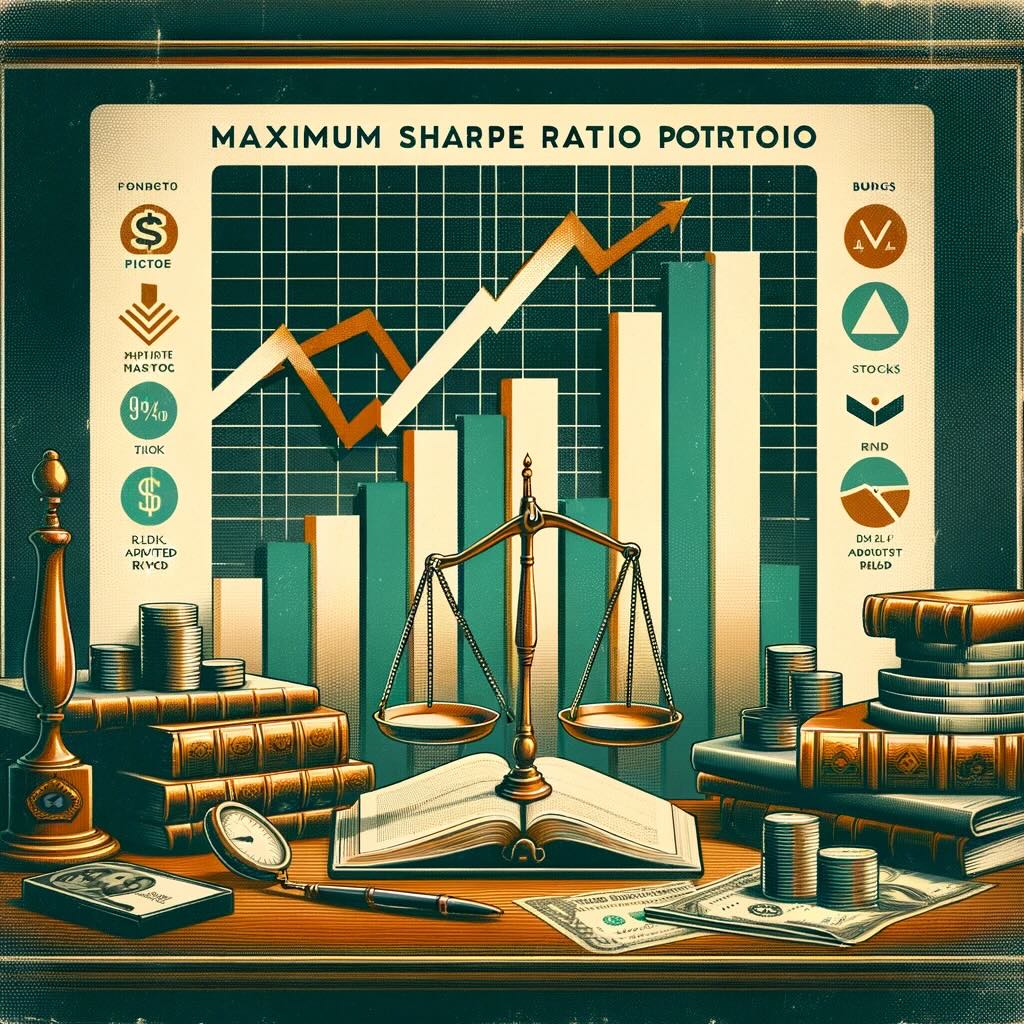
Improving the Sharpe ratio of a portfolio can lead to several benefits for investors. For starters, it can increase the likelihood of achieving long-term financial goals, such as retirement savings. By maximizing returns and minimizing risk, investors can grow their wealth while also protecting it from market volatility.
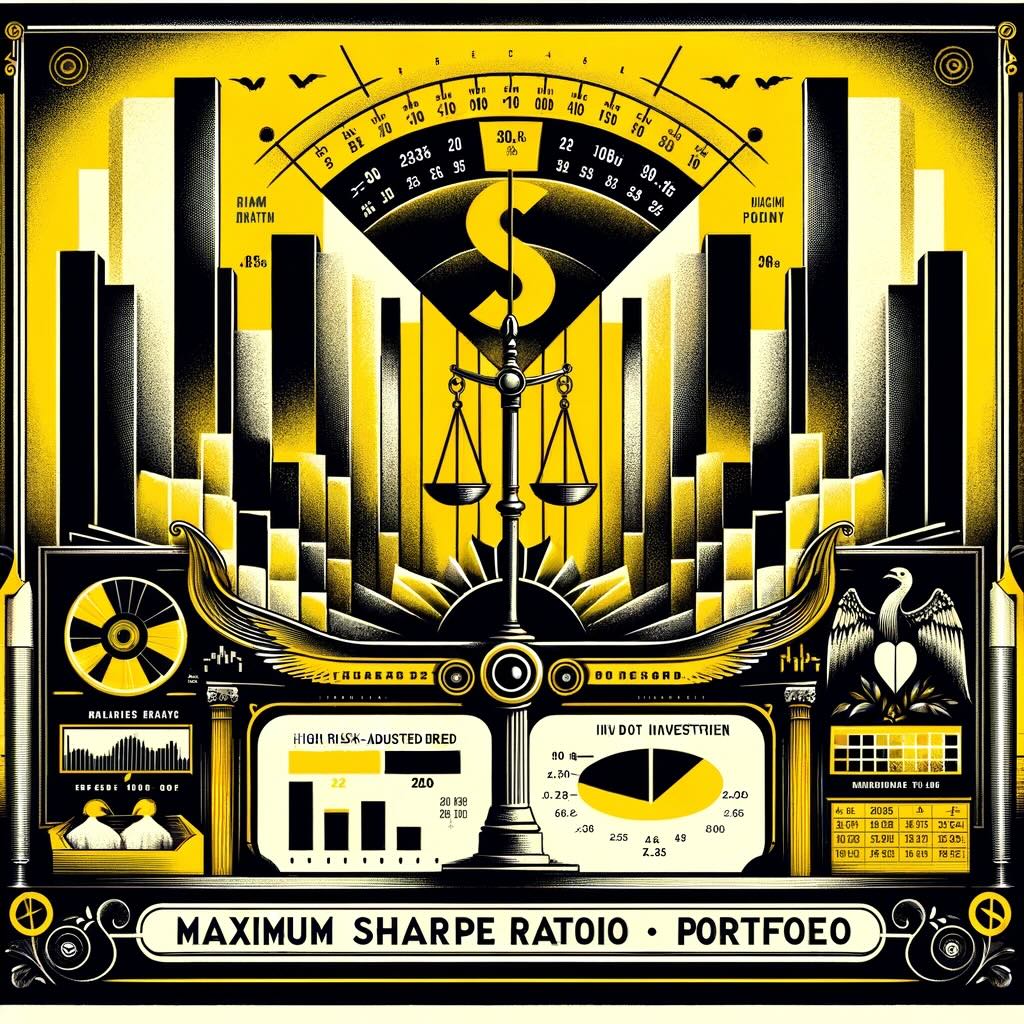
A Buffer Against Inflation
Additionally, a higher Sharpe ratio can provide a buffer against the effects of inflation, which can erode the purchasing power of an investment over time. By generating higher returns with less risk, investors can ensure that their portfolio keeps pace with inflation and maintains its value over the long term.
Furthermore, a higher Sharpe ratio can also provide peace of mind to investors during periods of market turmoil. When the stock market experiences a downturn, a well-diversified portfolio with a higher Sharpe ratio can help mitigate losses and provide a more stable return on investment.
In short, investors should consider improving the Sharpe ratio of their portfolios as a way to achieve long-term financial goals, protect against inflation, and provide stability during market downturns. By diversifying into alternative investment strategies and taking a more active approach to portfolio management, investors can potentially improve their risk-adjusted returns and achieve greater success in the markets.
source: Ronald Moy, Ph.D., CFA, CFP on YouTube
Important Information
Investment Disclaimer: The content provided here is for informational purposes only and does not constitute financial, investment, tax or professional advice. Investments carry risks and are not guaranteed; errors in data may occur. Past performance, including backtest results, does not guarantee future outcomes. Please note that indexes are benchmarks and not directly investable. All examples are purely hypothetical. Do your own due diligence. You should conduct your own research and consult a professional advisor before making investment decisions.
“Picture Perfect Portfolios” does not endorse or guarantee the accuracy of the information in this post and is not responsible for any financial losses or damages incurred from relying on this information. Investing involves the risk of loss and is not suitable for all investors. When it comes to capital efficiency, using leverage (or leveraged products) in investing amplifies both potential gains and losses, making it possible to lose more than your initial investment. It involves higher risk and costs, including possible margin calls and interest expenses, which can adversely affect your financial condition. The views and opinions expressed in this post are solely those of the author and do not necessarily reflect the official policy or position of anyone else. You can read my complete disclaimer here.

